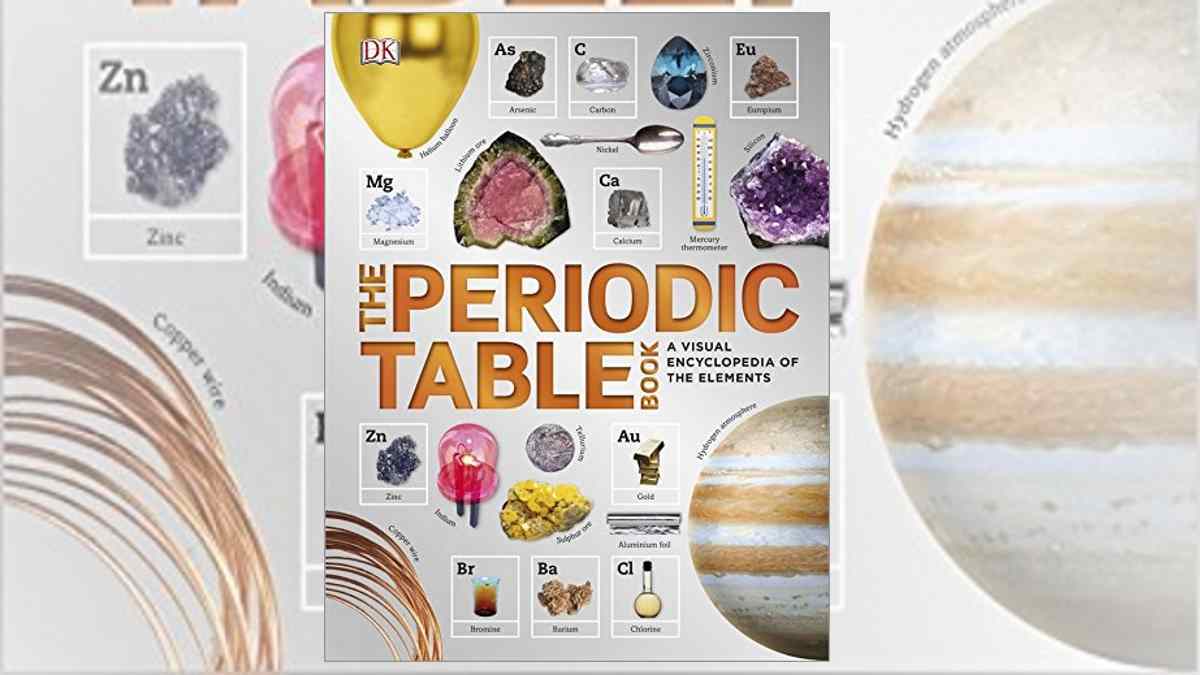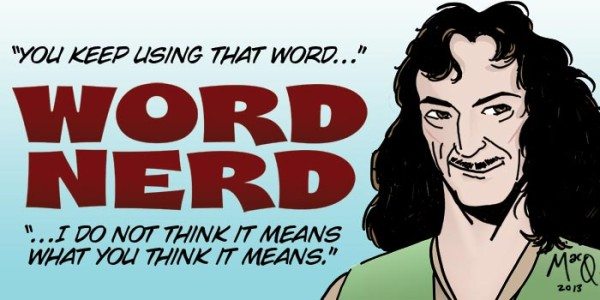This week’s word is “Element.”
This week I have two periodic table books for you. I’ve had them a while, sitting on the back burner, waiting for the opportunity to share them with you. The periodic table is probably one of my favorite things in the world. For those of you familiar with Desert Island Discs (for those not, click here), it’s entirely possible that I might take a copy of the periodic table with me as my luxury item. I might well take one of these books too. Up until now, I probably would have gone for The Lord of the Rings but every page of both these books gives me immense joy. Perhaps, I should get out more.
What is DK’s The Periodic Table?
If you’re a regular Word Wednesday reader, you know the DK book drill. Informative text + amazing photos = engaging read. This book is no exception. It’s aimed at non-experts, at those who are interested in the chemistry and properties of the periodic table, at a general level. My 12-year-old loves this book. It has just the right ratio of science to sparkly pictures. NOTE: In the US, this book is called The Elements Book, titled under the Smithsonian brand.
The book opens with a preamble that discusses the evolution of our understanding of the elements, and their subsequent arrangement into the periodic table. After that, we are treated to an element by element breakdown from the Alkali Metals (the left hand side) to the Noble Gases (the right-hand side). This element breakdown is arranged into larger sections, one for each group (the columns down the table) with the Transition Metals, Lanthanides, and Actinides each getting their own section too. The book is over 200 pages long, with the elements taking up 180 of them, so this really is a comprehensive guide.
The book also comes with a fold out periodic table poster, which, were I stuck on a desert island, would make a particularly great luxury item. Especially if I’d had the forethought to laminate it, before heading off on my journey.
 So what’s on the pages?
So what’s on the pages?
The most abundant or useful elements are allocated their own double page spread, with the left-hand page containing the forms it can be found in. Expect pictures of amazing crystal forms and the elements in their pure state. On the right-hand page, there are notes on an element’s uses. So for sodium, table salt, gas lamps, and Egyptian mummification. For platinum, resistance thermometers, cancer drugs, and fuel cells. Less common elements such as molybdenum and technetium only get a page each, featuring both pure form and uses. The heavy, short-lived, radioactive elements are placed 4 to a page, generally with a blurb about their discovery.
Every element also has a small diagram that shows atomic structure, number of protons, neutrons, and electrons, position on the periodic table, and the year in which it was discovered.
All in all, DK’s The Periodic Table book is an excellent book, perfect for those who want to start learning about the chemistry of the world around us.
You can buy the book here, in the US, and here in the UK.
 What is Pt: The Periodic Table?
What is Pt: The Periodic Table?
Aurum Press’ contribution, Pt: The Periodic Table, is different, yet equally pleasing to DK’s book. It takes the infographic approach. There are very few photos in this book but, nevertheless it is still visually arresting. The science in this book is a little more in depth, making it more suitable for those with a decent understanding of the periodic table. I would say the book is great for budding chemists ages 16 upwards.
This book is laid out a little differently from the DK book. It has 4 sections.
1. The Periodic Table.
This section contains information about atomic structure, how the periodic table works, and a description the general properties of each group. It also has a collection of deliciously esoteric snippets of information, such as how many atoms there are in a full stop.
2. The Big Picture.
Possibly my favorite section, featuring reactivity, Universal abundance, a rather lovely page full of spectra, and whole lot more information about the life of elements. The second part of the “The Big Picture” covers elements external properties, such as density and hardness.
3. Inside Chemistry.
This section looks at what’s going on inside an element, or between its atoms. It looks at bonding, radioactivity, and making new elements. There’s also a lovely page on the chemistry of gems.
 4. Directory of Elements.
4. Directory of Elements.
The rest of the book is devoted to the individual elements. These are described in atomic number order. Most of these are single pages, but again, some of the more important elements get a whole double page. Each element has a number of facts given about it, both scientific and historical. There is an information box for each element too, containing position in the Table, atomic weight, color, it’s phase (solid, liquid, or gas) melting and boiling point, crystal structure, type of element (e.g. alkali metal), and atomic number. There is also a little picture of its electron orbits and crystal structure. This is a lot more information than contained in the DK book, as you might expect for a text aimed at older readers.
 I absolutely love Pt: The Periodic Table. It’s not a glitzy as some of the books on the subject that use photos, but it’s packed full of interesting information. The infographics draw the eye in a way photographs don’t. Photos are perhaps more attractive, but Pt’s infographics are stuffed full of glorious elemental information. If you have any sort of interest in the periodic table or the elements, this book is well worth a look
I absolutely love Pt: The Periodic Table. It’s not a glitzy as some of the books on the subject that use photos, but it’s packed full of interesting information. The infographics draw the eye in a way photographs don’t. Photos are perhaps more attractive, but Pt’s infographics are stuffed full of glorious elemental information. If you have any sort of interest in the periodic table or the elements, this book is well worth a look
You can buy the book here, in the US, and here, in the UK.
Depending on your need, you’ll find much to love about these books about the periodic table. They’re both excellent additions to the world of elemental literature. I highly recommend them both.
If you enjoyed this post, check out my other Word Wednesday reviews, here.
Disclaimer: I received copies of both of these books in order to write this reviews.




